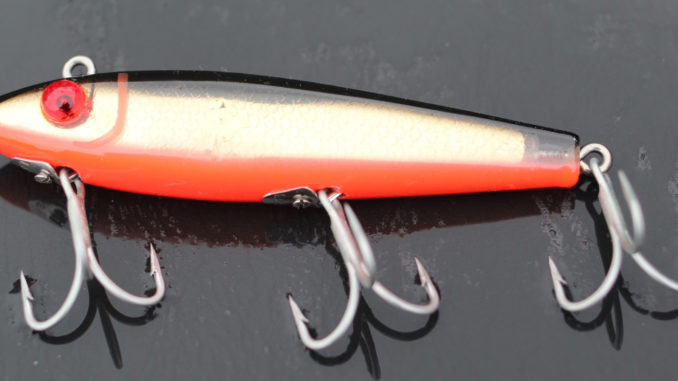
November is great for catching trout on foot
The remnants of hot weather have played out, and even though plenty of good fishing remains, many anglers have winterized their boats and stowed their fishing gear until spring. But for many others, like Steve Chanilo of Murrells Inlet Outpost, the trout bite is too hot to keep them away. A growing trend for this month is to pursue trout on foot, focusing on areas that a boat is little to no help anyway.
“Ambush spots are important this month, and plenty of those are easy to get to while walking or wading, either in the surf or in the inlets and creeks,” Chanilo said. “This is easily my favorite time of year to fish for trout, and these aren’t just run-of-the mill trout; these are 7- to 10-pound fish.”
Chanilo uses mainly artificial lures this month.
“All of the mullet are gone, so I like to use slow-sinking plugs like MirrOlures. Some of my friends use grubs and have luck with those, but I have a lot of luck with surface plugs and really enjoy catching trout much more on them,” he said.
While the trout are abundant, Chanilo said it doesn’t pay to just blindly cast in the surf or inlets. Anglers need to tightly focus their efforts on the ambush spots these fish use to find their meals.
“Usually, when it’s cold, trout won’t expend too much energy chasing food. They’ll find a spot to hunker down that gives them a good advantage over baitfish — a place they can get shelter as well as one that naturally attracts baitfish,” he said.
One of the best spots to ambush these trout is around jetties and groins.
“If you watch how the tide and surf are pushing into a jetty or groin, you’ll see the spots where baitfish are likely being pushed. This is where you’ll find the big trout,” said Chanilo (843-651-6603).
Inlets and creeks are good bets, too, especially during November’s full moon phase.
“One day before through one day after the full moon, I abandon the surf and stalk trout in the creeks. It’s easy to cover a lot of ground on foot, and MirrOlures can be deadly here,” said Chanilo, who believes the dark of early morning and late evening are usually the most productive times, especially on artificial plugs. “And when the high tide is within two hours of sunset, the trout bite is as hot as you’ll find.”
When fishing in the surf, Chanilo wears waders and a rain jacket and focuses on any changes in the ocean floor.
“It can change daily, and you have to study it at low tide. I look for an area that has a trough or ditch that offers some type of change. Grand Strand beaches are especially notorious for being flat, so even a small change, like a 6- to 8-inch ditch, is good,” he said. Find these spots at low tide, and you’ll know where the trout will be at high tide.
When surf fishing, Chanilo likes to stick with MirrOlures while wading within casting range, but when he does opt for natural bait, he likes to free-line menhaden.
“I don’t even use a split-shot — just the weight of the bait, and I wade close enough to those ditches and troughs that I don’t have to heave it out there too hard,” he said.
Whether fishing in the surf or the creeks, Chanilo sticks with the same gear. Spinning reels in the 2500-series range, 8- to 10-pound monofilament, and a 6- to 7-foot Ugly Stick rods make up his arsenal, and he likes the MirroLure 808 because it closely resembles the color pattern of menhaden. When using live or cut menhaden, he prefers 1/0 to 2/0 circle hooks.
Chanilo said fly fishermen that don’t mind fighting the wind can have some fun with these trout as well. He suggests anglers use about a 9-foot, 8-weight rod with floating line and an 8- or 10-foot tippet.
“This time of year, conditions really have to be just right, but when they are, there is nothing like getting that fly to land in an ambush spot and feeling a gator trout take it and start shaking his head,” he said.




Be the first to comment